The education sector is undergoing a revolution. The education sector is changing as the importance of continuous education increases for professionals who want to advance in their careers.
The traditional way young graduates learn, and adults learn is very different. The expectations, motivations, and lifestyles of younger students are very different.
It also presents new challenges for education providers in delivering and assessing their education. It also offers great opportunities for innovation and reaching out to a wider student population.
This article examines how adult learners are changing the education system.
Shift in student demographic
The average person lives longer, and many work well past retirement age. More learners want to upgrade their skills.
The number of teenagers in the US is expected to decrease slightly between 2015-2030. Education providers must reach out to other generations to be sustainable in the future.
There is a market opportunity for re-engaging these adults in education.
These adults are more likely to complete their education if they return to formal education if four million have already completed two years of college. Most learners in higher education do not have the age range of 18-22 that is commonly assumed.
Different expectations
Students who enter further education directly from school may look forward to meeting people and developing a social life.
They are looking for various extracurriculars, fraternities, and sororities. Adult learners see education as an opportunity to network with professionals that may help them advance their careers.
65% of adult learners report that education has helped them to expand their professional networks. When choosing between providers, they are less likely to prioritize extracurricular activities.
img alt=”Why DMI?” src=”https://a.storyblok.com/f/55452/1340×620/2f18ca3026/why_choose_dmi_inliner.png”/>
Learn more about our Learning Formats
Convenience plays a significant role in adult learners’ decisions when choosing their education provider. It is essential that adult learners can fit their studies around their work and family obligations.
Online and virtual classrooms allow learners to save time and money on travel. This must be balanced against the recognition and accreditation of the course. Adult learners who choose courses for their continuing professional development expect their new skills to be recognized in their respective professional sectors and across organizations.
The goal of career progression or a career change may motivate a person to continue their education. The testimonials of previous adult learners that have used their education to develop a career can be persuasive to encourage adult students to return to school or to take more courses.
Experience-based learning
Adult learners may value experiential learning more because they want to see the application of their knowledge in real workplace situations.
Adult learners are more likely to ask how their new knowledge will fit into their professional lives. This is because school students might be used to passive learning. By integrating learning into the workplace, course assessments can be used to evaluate skills acquired.
Southern New Hampshire University (SNH) has implemented competency-based learning (CBE) for five years. Students receive college credits for demonstrating skills rather than the number of hours they spend in class.
This option may be attractive to professionals with a busy schedule trying to fit in further education. This is because less time in the classroom can be spent away from work or other obligations.
Credits for courses
Prior Learning Assessment is another way to assess adult learners.
It makes sense for a student with years, or even decades, of professional experience to accelerate their education using their existing skills. It acknowledges that learning does not always occur in formal education and that “on-the-job” experience should be valued along with more traditional models of assessment and learning.
This can be used to create courses tailored to learners’ individual needs rather than a model of one size fits everyone. Adult learners need education providers to respond to their needs. This should be reflected in the timetable of classes, communication, and technology.
Adult learners tend to see themselves more as partners than just recipients of education.
Microlearning
Microlearning is a great way to help learners make learning a habit and track their progress. Microlearning allows learners to make learning a routine and track their progress.
The schedules of adult learners can be accommodated. Accessing Microlearning is now possible on smartphones, whether you are commuting, waiting for your children to be picked up at school, or between meetings.
DuoLingo’s success, with over 25 million monthly users, shows the public’s appetite for Microlearning.
Impacting cost models
Adult learners are attracted to impactful, short, and relevant education. This must be reflected in the cost. Some adult learners are fortunate enough to be reimbursed by their employers. Still, others will have to pay for themselves, especially those who want a career change or re-entry into employment.
There are also hidden costs that come with higher education. These include travel, books, and childcare. In contrast to younger students, who are more concerned with socializing than education, mature students will be more focused on results and want an immediate return on investment.
The University of Arkansas eVersity allows students to take a class at a given time. It charges a standard credit hour rate and includes all required textbooks within the price. Students can budget and pay for courses as they go.
Technology is essential
Employees need to understand how to use digital technology in their roles. Those familiar with technologies can expect them to be part of their training.
Many features that make education more accessible, such as Microlearning, certifications, and CBEs, are based on technology.
In contrast, adult learners must be supported if they are not digital natives or lack access, mainly if recent work experiences have not involved much technology.
Collaboration is essential for adult learning
To know what working adults and professionals need, educators must have a relationship with the government and industry.
Partnerships between employers and educators can lead to education tailored to the workplace. This assures adult learners that their courses are up-to-date and relevant. Adult learners could also benefit from financial assistance if employers agree to support their studies. Linking education providers with industry can facilitate student placements and allow industry experts to assist in developing course materials.

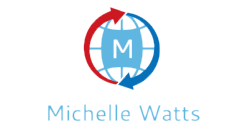


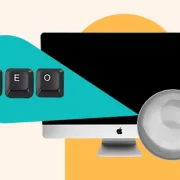



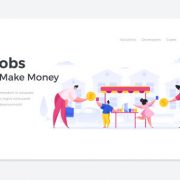









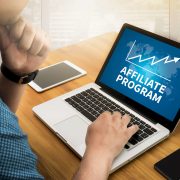
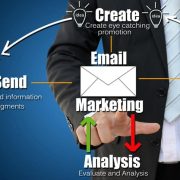
Comments